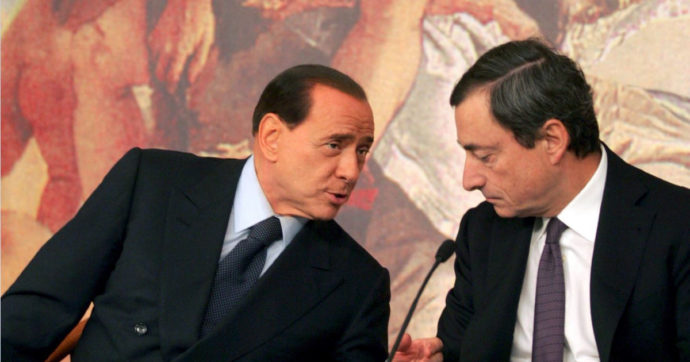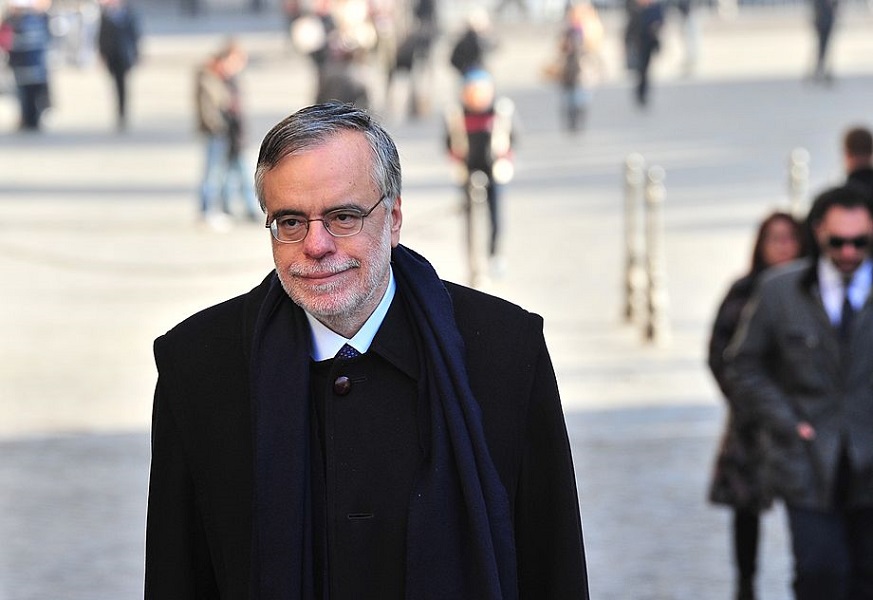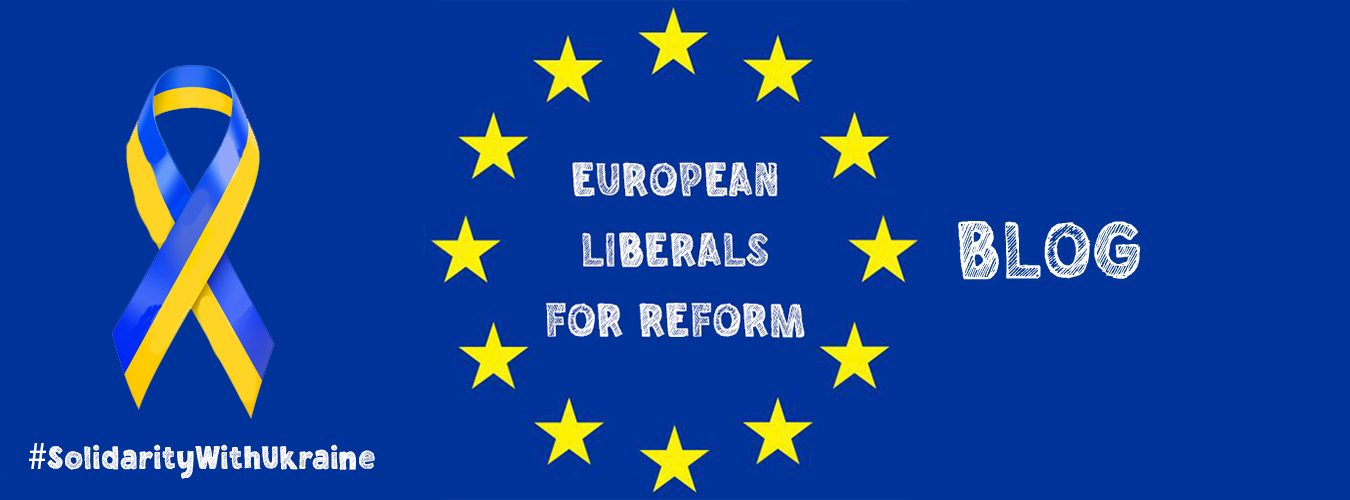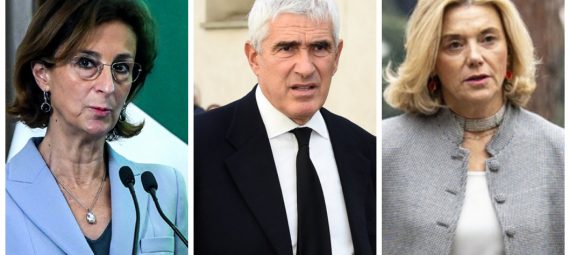EMANUELE LOMBARDINI
Ready, steady, go! In Italy the search for the new President of Republic is starting. Next 3 February, the seven-year term of the current head of state, Sergio Mattarella, expires, and he has already said no to a re-nomination, instead hoped for by many parties to try to avoid this umpteenth ‘misfortune’, the one of having to get together, around a table, to find a good understanding, one that does not blow up the Parliament and also their pensions.
In fact, the new law provides that in order to be entitled to a pension, one must remain in office for at least 4 years, 6 months and 1 day out of a total of 5 years. To secure their pension – which they will collect from the age of 65, they will therefore have to pick the right name, in order to not provoke an earthquake inside the Parliament and preserve legislature at least until September 24, 2022. Should it not happen, the risk for many of them is that they will not be able to run again, considering that a new law has scaled down the number of MPs, as from the next elections.
How the Italian President of the Republic is elected
Italy is a parliamentary republic, with the Parliament electing the President of the Republic. 630 deputies and 321 senators will be entitled to vote, as well as 58 regional delegates. Of the latter, 31 belong to the center-right.
A President of the Republic can be elected with an absolute majority (two thirds of those entitled to vote) during the first three ballots. Subsequently, from the fourth ballot onwards, a simple majority will be sufficient: 505 out of 1009.
Berlusconi and his win-win situation
The center-right has staked everything on Silvio Berlusconi, who is currently an MEP of the EPP, but the former prime minister realized that he did not have the numbers to make it within the first three votes: in fact, the whole centre-left coalition lined up against him, including Italia Viva (Renew Europe member inside the European Democratic Party) and the 5 Star Movement.
The elderly leader (85 years old) withdrew his candidacy, clearing the way for an agreement between the parties but, in reality, setting himself up for a win-win situation: if there is an agreement on a candidate for the first voting sessions, he’ll be able to say that he “stepped aside for the good of the country” but, should the stalemate reach the fourth voting round, he could come back into play: at the moment he can count on at least 400 votes, so that reaching 505 votes shouldn’t be too difficult. So be careful before considering Berlusconi out of the running.

The names that all could agree on
What is evident is that the new president of the Republic will not be an expression of the center-left: the centre-right has a relative majority in the country, so that it can put forward some liberal names or, at least, names that both sides can agree on.
The most likely candidate to be the new President is Elisabetta Belloni. She has behind her a long diplomatic career, she is 63 years old, speaks 5 language, an insider who has worked with governments of various colors and is currently the head of the Italian Secret Services. If she were elected, she would be the first female head of state in Italy. No one knows which party she voted for. Her name will come out, probably more in the fourth vote than in the first three. Unless there is certainty that she has the votes to be elected quickly
Mario Draghi, current prime minister, has the numbers to be elected in the first round and therefore by a large majority, but his election could be a time bomb for the government, with Lega ready to pull the plug as soon as Draghi leaves Palazzo Spada. It is no coincidence that the Democratic Party, which was pushing for his election, also changed its mind and Berlusconi also asked that Draghi should remain in his place.
But as for the Forza Italia president, wait before writing off, considering that he really likes the idea of becoming President of the Republic.
Pierferdinando Casini, is another who could be elected in the first three rounds. Relatively young (66 years old), elected continuously since 1983, he has been Deputies president of the Lower Chamber, a long time member of the centre-right, he is currently a centre-left senator. He is also a Catholic with solid Christian Democratic roots. Fully in line with the Italian tradition. Enjoying a good reputation and respected by all sides, Casini shuns shouty, confrontational politicking. He would find few obstacles. In the last few hours it has emerged that it could, however, also be a name to be spent put forward starting from the fourth round of voting.
Marta Cartabia, current Minister of Justice and former President of the Constitutional Court, is for many the ideal president. She is determined, Catholic, young (58 years old), esteemed abroad. But she is not likely to be voted on by the M5S, after cancelling their key justice reform, with which they intended to introduce rigour in the system.
Giuliano Amato Is the only left wing candidate, who could also gather votes on the right. He is professor of Constitutional Law, judge of the Constitutional Court, twice President of the Council, several times Minister and former (socialist) parliamentarian, he has the perfect curriculum to be President of the Republic. Yet, although his aspiration to the Quirinale is known, he never managed to get himself elected. Today he is 83 years old and for this reason it could be the ‘timed’ solution, if an agreement is not found, to get to the end of the Legislature.

What to be expect from the first three ballots
In the first three votes, unless there are surprises, nothing should happen. The center-left could vote for a “blank ballot” or a flag candidate, Andrea Riccardi, close to the Democratic Party, founder of Comunità di Sant’Egidio, a powerful Catholic humanitarian organization, former minister in the Mario Monti government.
It’s more difficult for the candidacies of the current EU commissioner for economics, Paolo Gentiloni (Pd) or the former minister and magistrate (Pd) Anna Finocchiaro to take hold.
The center-right has in turn a series of flag-candidates: Letizia Moratti, (liberal, Forza Italia) former mayor of Milan and current health councillor in Lombardy; Marcello Pera, former Senate president and senator, university professor and philosopher (Forza Italia), but also Maria Elisabetta Alberti Casellati, also of Forza Italia, current Senate president. She will be provisional Head of State, should all attempts to elect a new president prove fruitless by the 3rd of February.
How long does the voting last
Parlamentarians and regional delegates will vote from 3 pm tomorrow, to the bitter end. But it will be a much longer vote: because of anti-covid precautions, there will be only one voting round per day, to avoid crowding in the chamber and a thorough disinfection of the premises between sessions. Voting will take place in special cabins, to minimise contact and risk of infection. Parliamentarians will undergo daily covid test and those testing positive or quarantined will use drive-in voting booths, set up in the parking lot of the Chamber of Deputies, without getting out of their car.
Author Profile
- Emanuele Lombardini is our blog editor-in-chief. He is an experienced journalist, a Libdem, Italian and passionate European.
Latest entries
Post Disclaimer
The opinions expressed by the author of this post do not necessarily represent the opinions and policies of ELfR.





